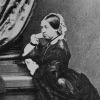Mormon Genealogy – An Interview with Randy Stebbing Part 2
In anticipation for RootsTech 2012 genealogy conference in Salt Lake City, Utah, we interviewed Geni Curator Randy Stebbing, who graciously agreed to share with us his experience working on projects about Mormon genealogy on Geni. Below is part 2 of his interview. You can find part 1 here.
What are some of the biggest challenges of doing Mormon genealogy?
One of the challenges is working with profiles that lived recently. Many of these profiles are initially “private”. Because non-public profiles are by default restricted to close family members it takes patience to contact descendants and get their help by them sharing their deceased ancestors and turning them into “public” profiles. Once the profiles are “public” they can be documented, enhanced with new data and sources, and added to the projects. My number one request for people to help with this project is to make sure that all of their ancestors that have been deceased for a reasonable amount of time be made “public”. I would hope that all contributed profiles in the 1800’s and earlier would be voluntarily made into public profiles so that the “big tree” can continue to grow and be improved.
A second challenge is duplication. On geni, “Pro members” have special access to tools for both searching for and merging duplicates. I’d guess that I’ve probably merged 25,000 profiles to cleanup the 5,000+ profiles that are currently part of the pioneer projects.
Your question asked about challenges of researching early Mormon church members. Actually one of the greatest things about this research is the wealth of material that is available. The LDS Family History Center,coupled with 1,000’s of free local family history centers throughout the world make research easier no matter what your research area is.
What’s the most interesting discovery you’ve made so far through these projects?
The most exciting discovers for me involve my own family history of course. For Mormon specific research the church’s new History Library in Salt Lake is invaluable. For example in a recent visit to the LDS Church History Library my wife and I found her 2nd great grandmother’s letters and poems written in her own handwriting from the 1800’s. As you an imagine we were thrilled to find these for our family. Many of these letters have now been uploaded to geni for other’s to enjoy. I additionally found a very detailed written history of a different Pioneer era ancestor, Charles Crismon, that detailed his adventures on the frontier. Apparently he made quite a fortune in California, Arizona and Utah in milling, freighting, mining and the railroads, but in the boom and bust economies of that era, lost much of his wealth by the end of his life. My extended family has enjoyed me uploading information that I find to geni. The benefit of this is that branches of the family unknown to me can instantly have the info available the moment I upload it to geni. I likewise benefit from their research.
I’m learning interesting things all the time. Just yesterday I learned some additional information about my 3rd ggrandfather Benjamin Lewis. Previously I knew that Lewis was one of 18 men murdered in the Haun’s Mill Massacre that occurred at the height of the Mormon/Missouri conflicts. Just yesterday, while reading in a primary source document I came across one line of text that identified the name of the man in Missouri militia who bragged that he was the one the shot and killed my ancestor. I was then able to add that info to my ancestor’s profile and provide a link to the profile of the person who purportedly took his life. To me its the surprising connections between people that is so very interesting. On geni, Pro users can find the family relationship between themselves and anyone else in the “big tree”. It’s been fun to find out how I and others are related to Brigham Young, Parley P. Pratt and other early Church leaders.
How can those interested get involved?
For visitors of the RootsTech conference the publicly available Geni API will be of particular interest. For example I’ve been able to write some programs using the API to provide me with running totals of the number of Mormon Pioneers included in the 24 sub-projects. One way to help the geni community is to get familiar with the API which allows you extend and automate many things on the site.
As far as getting involved in any of the Mormon projects just visit any of them and ask to join them by sending a “collaboration request”. Then send me the web address link to the geni profile of your ancestor and I’ll help you add them to the appropriate project. Keep your deceased ancestor’s profiles public. Users can help with projects even if they don’t have family members that belong to the project. For example you don’t have to be pioneer descendant to help with these projects.
Finally I want to put a plug in for the numerous other interesting and valuable projects that are on geni. I know that any of the 7,000 other existing projects on the site would also welcome your active collaboration. Spencer W. Kimball, the LDS leader, who first got me interested in family history said “We must lengthen or stride and must do it now.” Getting involved is the funnest part of geni —so just do it.








 Genealogy Discussions
Genealogy Discussions Genealogy Projects
Genealogy Projects Popular Genealogy Profiles
Popular Genealogy Profiles Surnames
Surnames The Geni Blog
The Geni Blog The World Family Tree
The World Family Tree